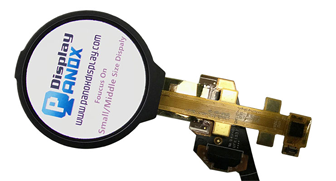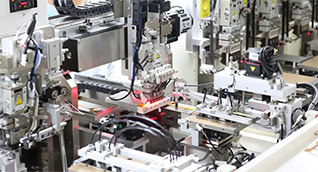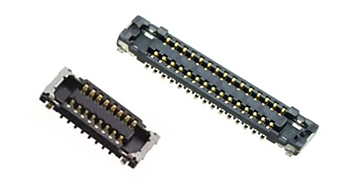PHOLED TV technology utilizes phosphorescent organic light-emitting diodes to achieve significantly higher energy efficiency and brightness compared to traditional fluorescent OLEDs. By converting nearly 100% of electrical energy into light, PHOLEDs enhance display vibrancy, reduce power consumption, and extend the lifespan of OLED panels, representing a major advancement in display technology.
What is PHOLED and how does it differ from traditional OLED?
PHOLED, or Phosphorescent Organic Light-Emitting Diode, is an advanced type of OLED technology that uses phosphorescent materials for light emission. Unlike traditional OLEDs, which rely on fluorescent materials, PHOLEDs can harvest both singlet and triplet excitons (bound pairs of electrons and holes) for light emission. This fundamental difference allows PHOLEDs to achieve nearly 100% internal quantum efficiency, whereas fluorescent OLEDs typically reach only 25% efficiency.
The primary distinction lies in their emissive layers:
-
Fluorescent OLEDs: Only convert singlet excitons into light, with triplet excitons largely wasted as heat.
-
PHOLEDs: Incorporate heavy metal compounds in the emissive layer to facilitate intersystem crossing, enabling both singlet and triplet excitons to produce light.
This results in PHOLED displays producing more light with less electrical power, leading to higher energy efficiency, greater brightness, and reduced power consumption.
How does PHOLED technology work at a fundamental level?
In a PHOLED, similar to other OLEDs, light is generated through electroluminescence when an electric current passes through an organic semiconductor layer. Electrons and holes are injected into this layer and combine to form excitons. These excitons can exist in either a singlet state (25% probability) or a triplet state (75% probability).
The crucial mechanism in PHOLEDs is phosphorescence, which allows the decay of both singlet and triplet excitons into photons. This is achieved by doping the emissive layer with organometallic complexes containing heavy metal atoms (like iridium or platinum). These heavy metal atoms induce a large spin-orbit interaction, which mixes the singlet and triplet character of excited states. This mixing facilitates the decay of triplet excitons, allowing nearly all generated excitons to contribute to light emission. This process ensures almost all charges effectively emit photons, with minimal energy wasted as heat.
What are the key advantages of PHOLED TVs?
PHOLED technology offers significant advantages for display performance:
-
Exceptional Energy Efficiency: PHOLEDs are nearly 100% energy efficient, meaning almost all electrical current is converted into light, with minimal energy wasted as heat. This significantly reduces power consumption.
-
Increased Brightness: Due to their higher efficiency, PHOLED TVs can achieve significantly greater brightness than traditional OLEDs, with some projections suggesting up to 300% brighter. This enhances HDR (High Dynamic Range) content.
-
Extended Lifespan: The enhanced efficiency leads to less degradation of the organic materials, potentially extending the lifespan of the TV panels. This also reduces concerns like burn-in, which becomes "something that just lives in the past."
-
Improved Color Volume: By consuming less power for brightness, PHOLEDs can maintain a wider color gamut even at higher luminance levels, leading to a richer and more accurate color reproduction.
-
Better Thermal Management: With less heat generation, PHOLED TVs run cooler, which contributes to overall system stability and longevity.
How does blue PHOLED specifically impact TV display technology?
Historically, achieving stable and efficient blue PHOLEDs has been a significant challenge. While red PHOLED materials became stable in 2003 and green in 2013, blue light emission requires higher energy, which tends to degrade organic materials more quickly.
However, recent advancements in blue PHOLED technology are considered the "last puzzle of OLED." Conventional OLED TVs often use phosphorescent red and green sub-pixels but rely on less efficient fluorescent blue sub-pixels. The successful development of stable blue phosphorescent materials, often utilizing iridium-based complexes, is crucial for unlocking the full potential of PHOLED TVs.
The integration of blue PHOLED allows for:
-
Uniform Efficiency Across Colors: All three primary colors (red, green, blue) can achieve near 100% internal quantum efficiency, leading to a more balanced and vibrant display.
-
Elimination of Burn-in: By making all sub-pixels more durable and efficient, the risk of burn-in, a common concern with older OLEDs, is substantially reduced, potentially eliminated.
-
Overall Brighter Panels: As blue light is often the limiting factor for overall display brightness, efficient blue PHOLEDs enable significantly brighter OLED TVs.
What are the current challenges and limitations of PHOLED technology?
Despite its promising advantages, PHOLED technology still faces hurdles, particularly concerning blue emitters:
-
Blue PHOLED Stability: As mentioned, blue light requires high energy, which can lead to rapid degradation of organic materials, making long-lasting and stable blue PHOLEDs difficult to develop.
-
Cost of Development: The research and development required for new phosphorescent materials, especially blue, is expensive.
-
Complex Material Synthesis: The synthesis of organometallic complexes with heavy metals is intricate and demanding.
-
Manufacturing Complexity: Integrating these advanced materials into display panels while maintaining uniformity and yield can be challenging.
Despite these challenges, ongoing research continues to push the boundaries of PHOLED efficiency and lifespan.
How might Plasmonic PHOLED further advance display technology?
Plasmonic PHOLED is a novel technology currently in the research and development stage that aims to further enhance PHOLED efficiency and lifespan. While specific details are proprietary, it involves a "fundamentally changed OLED device design" that improves how light is emitted through the internal structure of the OLED subpixel.
This innovative approach is projected to:
-
Double OLED Efficiency: Potentially making displays even more power-efficient.
-
Extend Lifespan Significantly: It could improve the lifespan of current devices by "even up to 10 times."
Plasmonic PHOLED focuses on new physics that control the degradation of OLEDs, promising a future with even more durable and efficient displays.
Does Panox Display incorporate PHOLED or related advanced display technologies?
Panox Display, a professional supplier and OEM manufacturer of OLED and LCD screens, focuses on providing high-quality display solutions, including advanced OLEDs. While PHOLED technology is primarily developed by material science companies and integrated by major panel manufacturers, Panox Display sources premium-grade displays from top manufacturers like AUO, BOE, Innolux, Samsung, and LG. This ensures that Panox Display's offerings stay at the forefront of display technology, providing access to the latest advancements.
When leading manufacturers integrate PHOLED technology into their panels, Panox Display is able to offer and support these advanced displays for various applications. Panox Display supports engineers, developers, and businesses by providing custom display solutions, including micro-OLEDs, flexible OLEDs, and industrial LCDs, allowing them to leverage the benefits of cutting-edge display technologies like those enabled by PHOLED research.
Panox Display Expert Views
“The advancements in PHOLED technology, particularly the progress in blue phosphorescent emitters, mark a transformative period for the display industry. The promise of significantly brighter, more efficient, and longer-lasting OLED panels directly benefits our mission at Panox Display. By collaborating with leading panel manufacturers who are integrating these innovations, we ensure that our clients, from innovative startups to established enterprises, have access to displays that push the boundaries of visual performance and energy efficiency.”
Conclusion
PHOLED TV technology represents a significant leap forward in display evolution, building upon the strengths of traditional OLEDs by drastically improving energy efficiency, brightness, and lifespan. By harnessing both singlet and triplet excitons for light emission, PHOLEDs approach near 100% internal quantum efficiency. While challenges remain, particularly in stabilizing blue phosphorescent materials, ongoing research, including novel approaches like Plasmonic PHOLED, promises even more impressive advancements. As a key supplier of advanced display solutions, Panox Display remains committed to bringing the benefits of these cutting-edge technologies to a diverse global clientele.
FAQs
What does PHOLED stand for?
PHOLED stands for Phosphorescent Organic Light-Emitting Diode.
How much more efficient is PHOLED than traditional OLED?
PHOLEDs can achieve nearly 100% internal quantum efficiency, compared to about 25% for traditional fluorescent OLEDs.
Will PHOLED TVs completely eliminate burn-in?
PHOLED technology significantly reduces the risk of burn-in by making the display materials more stable and efficient, with some experts suggesting it could be effectively eliminated.
Why is blue PHOLED so important?
Blue light emission is the most challenging for OLEDs due to its high energy requirements. Achieving stable and efficient blue PHOLEDs is crucial for unlocking full display brightness, efficiency, and uniformity across all colors.
Where can I find PHOLED displays for custom projects?
As PHOLED technology is integrated by major panel manufacturers, suppliers like Panox Display can offer access to these advanced panels for various custom display solutions.
















